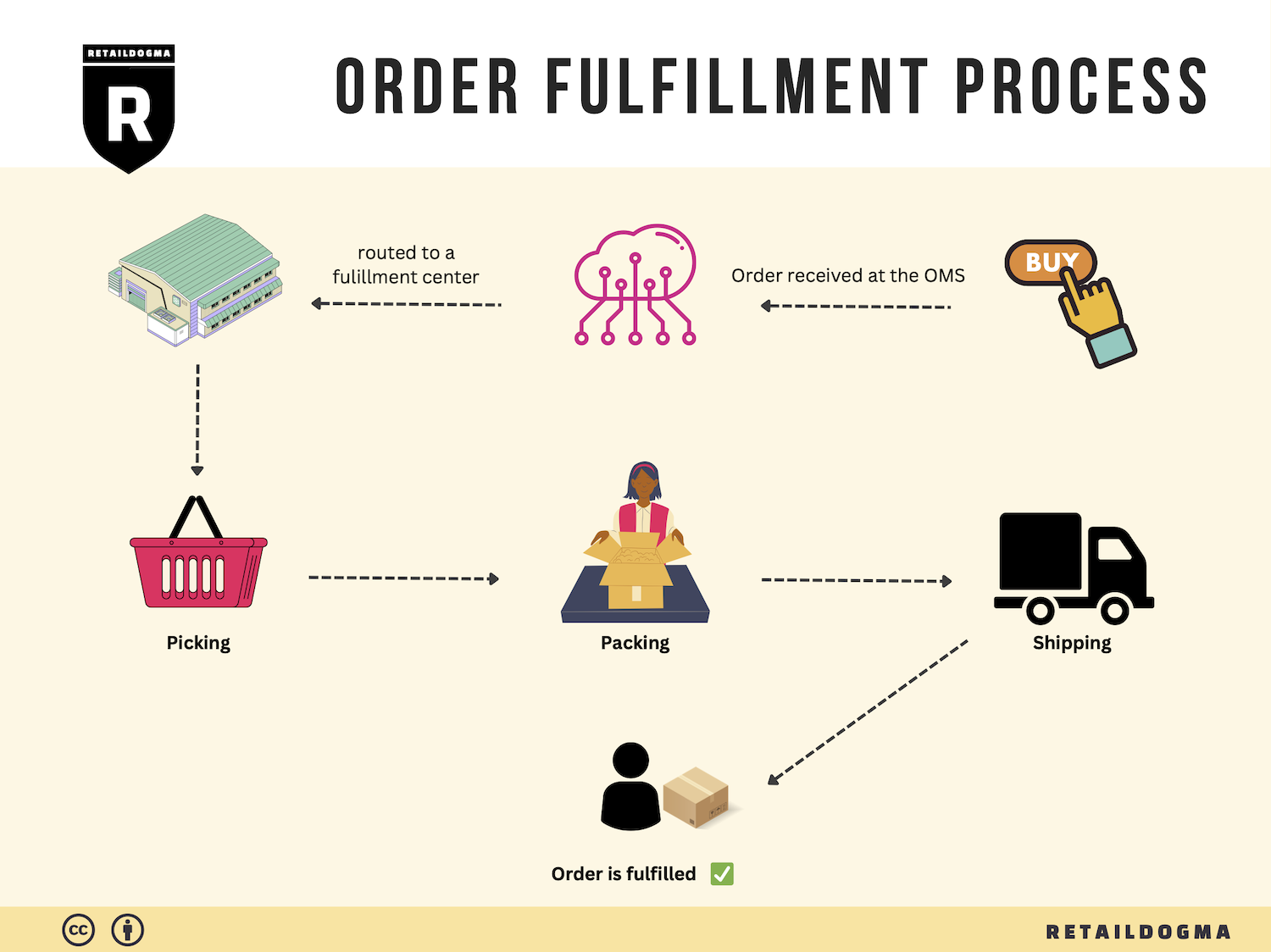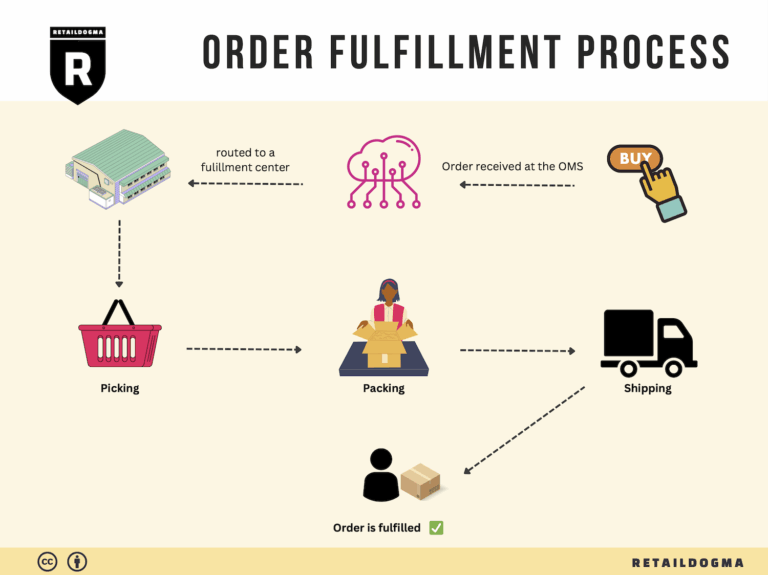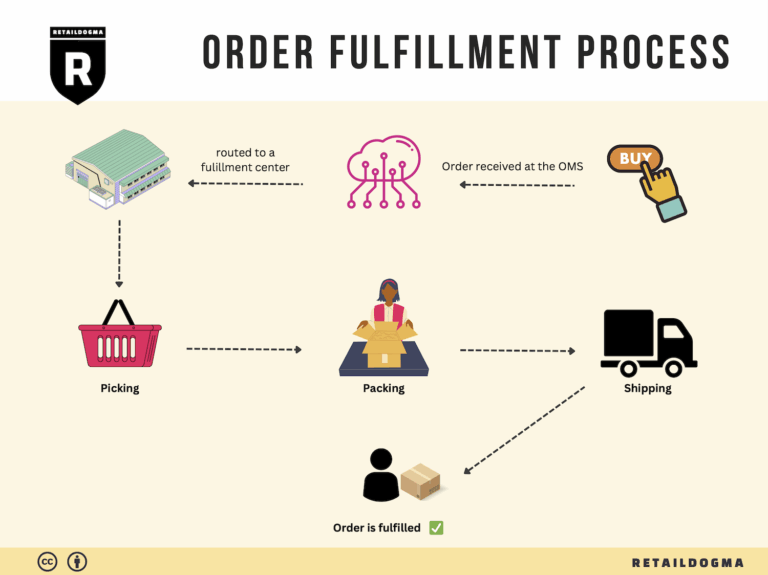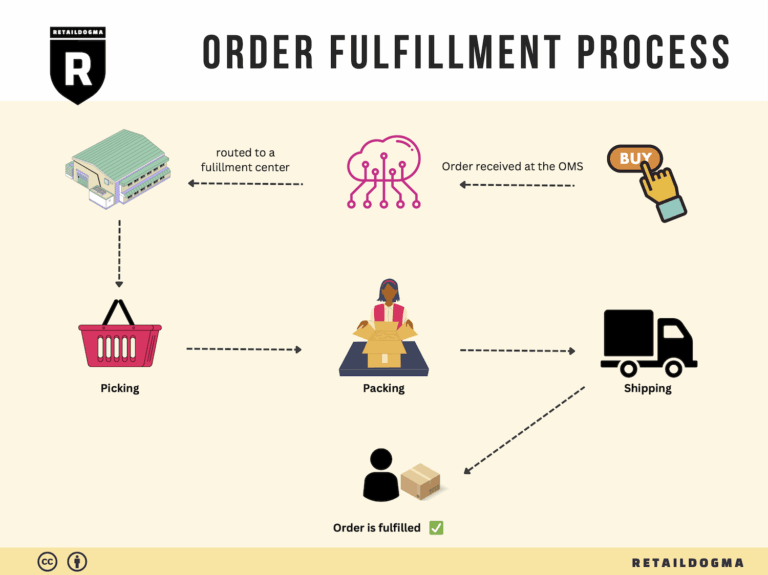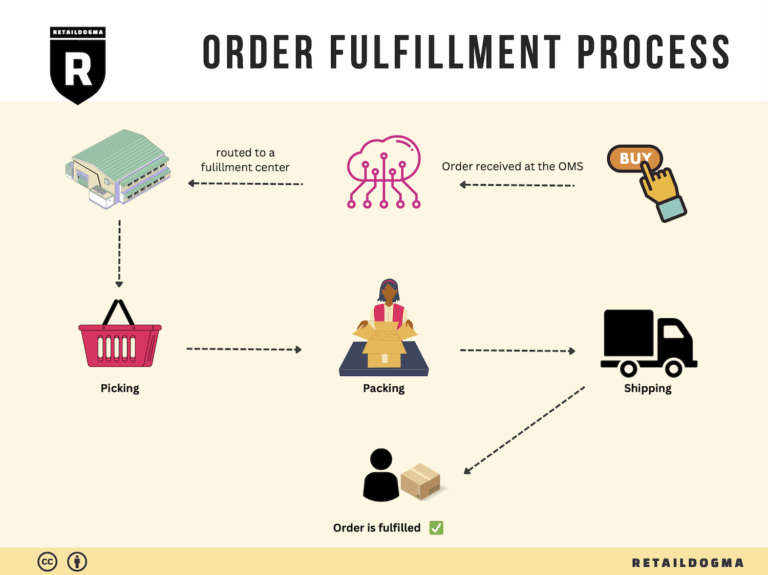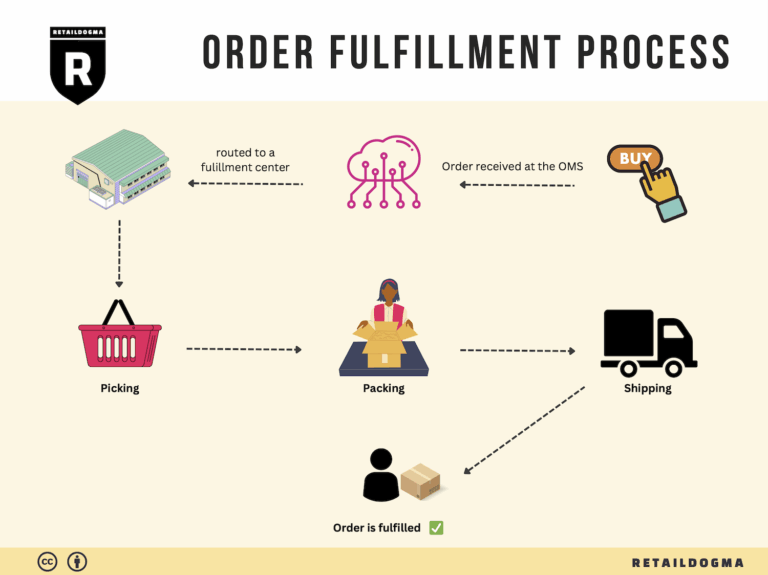How Order Fulfillment Works: A Step-by-Step Guide for Businesses
What is E-commerce Fulfillment? An Introduction for Growing Businesses
As e-commerce continues to expand, many business owners find themselves overwhelmed by the logistics of packing and shipping orders. The excitement of growing sales can quickly turn into frustration when faced with the complexities of fulfillment. From managing inventory to ensuring timely delivery, the fulfillment process can consume valuable time and resources, taking focus away from other critical aspects of running a business.
Fulfillment, at its core, is the process of getting a product from your warehouse or fulfillment center to the customer’s doorstep. This includes everything from receiving inventory and storing it, to picking, packing, and shipping orders. For growing businesses, understanding the nuances of fulfillment can be a game changer. It’s not just about getting the product to the customer; it’s about doing it efficiently and cost-effectively.
This guide will delve into the various fulfillment models available to e-commerce businesses. You’ll learn about Third-Party Logistics (3PL) providers, who handle warehousing and shipping on your behalf, and Fulfillment by Amazon (FBA), which allows you to leverage Amazon’s vast logistics network. We’ll explore the core services offered by these models, including inventory management, order processing, and returns handling.
Choosing the right fulfillment partner is crucial for scaling your operations. This guide will provide you with practical tips on what to look for in a partner, including their technology capabilities, customer service quality, and geographical reach. We’ll also discuss pricing structures, helping you understand how to assess costs and find a solution that aligns with your budget and growth plans.
The ultimate goal of this guide is to empower you, as a business owner or operations manager, to make informed decisions about your logistics. By understanding the intricacies of e-commerce fulfillment, you can streamline your operations, enhance customer satisfaction, and drive sustainable growth. Whether you’re just starting or looking to optimize an existing process, this guide will serve as a valuable resource on your journey to mastering fulfillment in the e-commerce landscape.
What You’ll Learn In This Guide
- What is E-commerce Fulfillment? An Introduction for Growing Businesses
- The Order Fulfillment Process: From ‘Buy’ Button to Customer’s Door
- Comparing Fulfillment Models: In-House vs. 3PL vs. Dropshipping
- A Deep Dive into Amazon FBA: Pros, Cons, and Who It’s For
- Core Services Offered by Fulfillment Centers
- How to Choose a Fulfillment Partner: A 6-Point Checklist
- Understanding Fulfillment Pricing: A Breakdown of Common Fees
- Frequently Asked Questions (FAQs) about Fulfillment
- Conclusion: Is Outsourcing Fulfillment the Right Move for Your Business?
- Important Disclaimer
The Order Fulfillment Process: From ‘Buy’ Button to Customer’s Door
1. Receiving Inventory
The first step in the order fulfillment process is the receiving of inventory. Upon arrival at the fulfillment center, shipments are unloaded and inspected for accuracy and quality. This step is crucial as it ensures that the items received match the purchase orders made by the business. Discrepancies, such as damaged goods or incorrect quantities, can lead to delays in fulfilling customer orders.
During this process, it’s essential to utilize a systematic approach for tracking inventory. A key term associated with this step is SKU (Stock Keeping Unit), which is a unique identifier assigned to each product. By using SKUs, businesses can streamline the receiving process, making it easier to manage inventory levels and ensure that products are correctly accounted for in the warehouse system.
2. Warehouse Storage
Once inventory has been received and verified, the next step is to store the items in the warehouse. Efficient warehouse storage is vital for maintaining an organized inventory system that facilitates quick retrieval of products when orders are placed. The layout of the warehouse can significantly impact operational efficiency; thus, it should be designed with accessibility and space optimization in mind.
During this phase, businesses may implement various storage methods, such as pallet racking or shelving systems, to maximize space. An important concept in this context is ABC analysis, a method of categorizing inventory based on its importance to the business—’A’ items being high-value and fast-moving, while ‘C’ items are lower-value and slower-moving. This analysis helps prioritize storage locations and management efforts.
3. Order Picking
With inventory properly stored, the fulfillment process moves to order picking, where items are selected from the warehouse to fulfill customer orders. This step is critical because the accuracy and speed of picking directly affect customer satisfaction. Errors during this stage can lead to incorrect shipments, resulting in returns and increased operational costs.
To enhance efficiency, businesses often use pick lists, which are documents that outline the items and quantities needed for each order. By organizing pick lists by warehouse zones, employees can minimize travel time while collecting items. Additionally, technology such as barcode scanners can be employed to verify items during the picking process, further reducing the likelihood of errors.
4. Order Packing
After items have been picked, they proceed to the packing stage. Proper packing is essential for protecting products during transit and ensuring they arrive in excellent condition. This step involves selecting appropriate packaging materials, labeling the packages accurately, and preparing them for shipment.
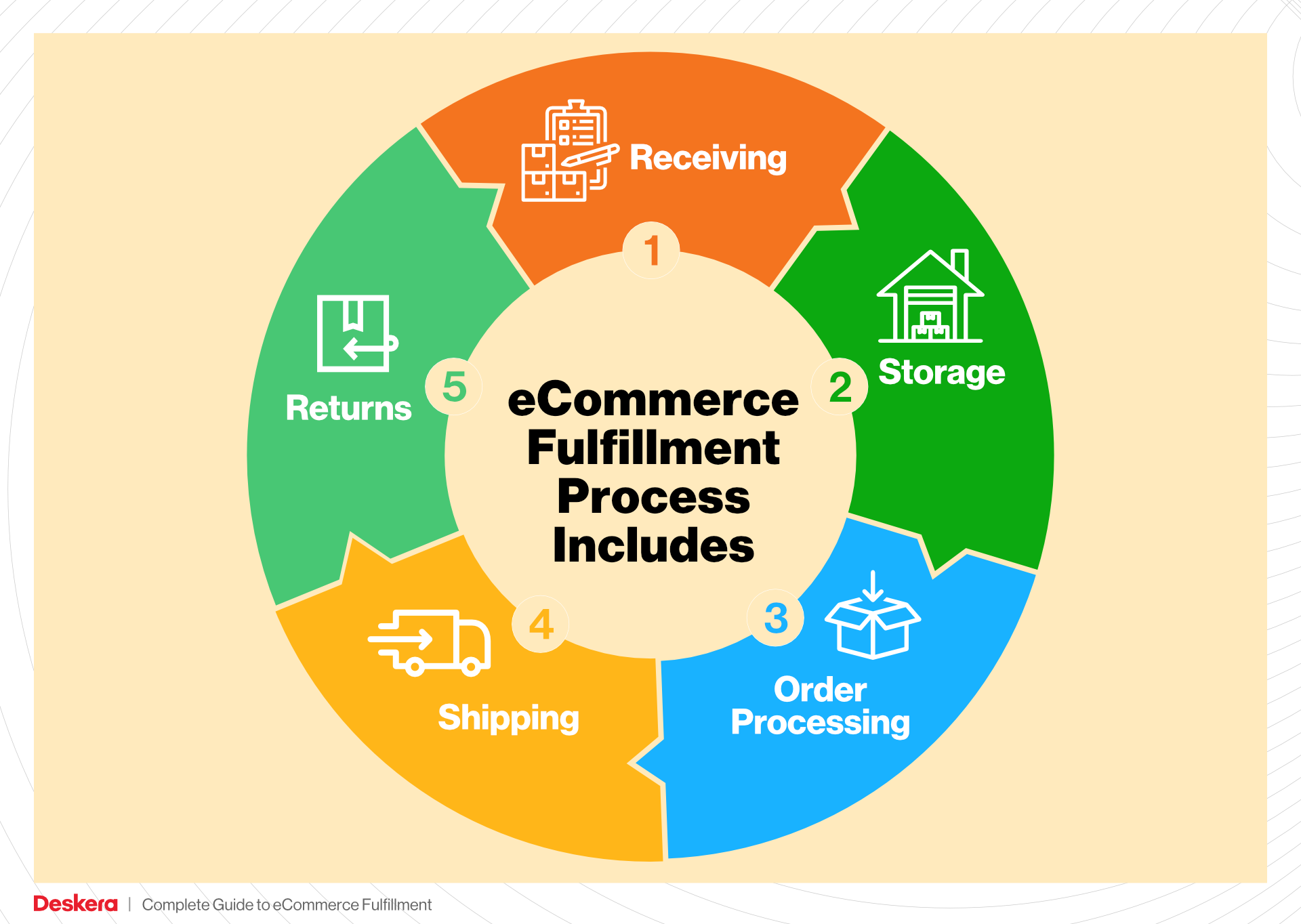
A key term related to this step is packaging optimization, which refers to the process of designing packaging that minimizes waste while ensuring adequate protection. Utilizing the right size boxes and cushioning materials can lead to significant cost savings in shipping fees and reduce the environmental impact of excess packaging materials. Additionally, clear labeling and documentation are crucial for facilitating smooth shipping processes and minimizing delays.
5. Shipping & Delivery
The final step in the fulfillment process is shipping and delivery. Once packages are packed, they are handed over to shipping carriers for transport to customers. This phase is critical as it represents the last opportunity to ensure customer satisfaction. Timely and accurate delivery can enhance customer loyalty and encourage repeat business.
During this step, businesses must select appropriate shipping methods based on cost, speed, and reliability. A common practice is to provide customers with tracking information, allowing them to monitor the status of their orders in real-time. This transparency not only improves customer experience but also reduces the number of inquiries regarding order status.
In conclusion, a well-structured order fulfillment process—from receiving inventory to shipping and delivery—is essential for e-commerce success. By focusing on each step’s efficiency and accuracy, businesses can enhance their operational effectiveness and ultimately improve customer satisfaction.
Comparing Fulfillment Models: In-House vs. 3PL vs. Dropshipping
Fulfillment Model Comparison
| Model | Who Handles Inventory | Best For (Business Stage) | Key Advantage | Key Disadvantage |
|---|---|---|---|---|
| In-House Fulfillment | Your own team | Established businesses | Full control over inventory and operations | High overhead costs and labor management |
| Third-Party Logistics (3PL) | Outsourced logistics provider | Growing businesses | Scalability and flexibility | Less control over inventory and shipping |
| Dropshipping | Supplier | Startups and small businesses | Low upfront investment and risk | Lower profit margins and longer shipping times |
In-House Fulfillment
In-house fulfillment refers to managing all aspects of order processing, inventory management, and shipping within your own facility. This model allows businesses to maintain full control over their inventory, order accuracy, and shipping processes. For established businesses with sufficient resources, in-house fulfillment can lead to improved customer service, as you can tailor the shipping experience according to your brand’s standards. However, the key disadvantages include high overhead costs related to staffing, warehouse management, and equipment. Additionally, businesses must invest in technology and systems to manage inventory effectively, which can be daunting for smaller operations.
Third-Party Logistics (3PL)
Third-party logistics (3PL) involves outsourcing logistics and fulfillment processes to specialized providers. This model is ideal for growing businesses that need to scale operations without the burden of managing logistics in-house. A 3PL partner can handle inventory storage, order fulfillment, and shipping, allowing businesses to focus on core operations such as marketing and product development. The primary advantage of using a 3PL is the scalability it offers; businesses can adjust their logistics needs according to demand fluctuations. However, a notable disadvantage is the reduced control over inventory and shipping processes, which can lead to inconsistencies in customer experience if the 3PL partner does not meet your standards.
Dropshipping
Dropshipping is a fulfillment method where the retailer does not keep products in stock but instead transfers customer orders directly to the supplier, who then ships the products to the customer. This model is particularly attractive for startups and small businesses with limited capital, as it requires minimal upfront investment in inventory. The primary advantage of dropshipping is the low risk associated with inventory management; businesses only purchase products after they’ve made a sale. However, dropshipping comes with its challenges, including lower profit margins due to the reliance on suppliers for fulfillment and potentially longer shipping times, which can lead to customer dissatisfaction. Additionally, as the retailer, you have limited control over product quality and fulfillment speed, making it essential to choose reliable suppliers.
Conclusion
Selecting the right fulfillment model depends on your business’s stage, resources, and strategic goals. In-house fulfillment offers control and customization, ideal for established businesses, while 3PL provides scalability and operational efficiency for those looking to grow. Dropshipping presents a low-risk entry point for startups but comes with challenges related to profit margins and customer satisfaction. By carefully evaluating these models, you can make informed decisions that align with your business objectives and customer expectations.
A Deep Dive into Amazon FBA: Pros, Cons, and Who It’s For
Understanding Fulfillment by Amazon (FBA)
Fulfillment by Amazon (FBA) is a service that allows e-commerce sellers to store their products in Amazon’s fulfillment centers. Amazon takes care of storage, packaging, and shipping of products on behalf of sellers, enabling them to reach a wider audience with minimal operational overhead. When a customer orders a product, Amazon handles the entire fulfillment process, including customer service and returns. This system is particularly advantageous for sellers looking to scale their operations without investing heavily in logistics infrastructure.
How FBA Works
-
Inventory Management: Sellers send their products to Amazon’s warehouses. Amazon provides guidelines on how to prepare and package items for shipment to ensure compliance with their standards.
-
Product Listing: Sellers create product listings on Amazon, indicating that they are using FBA. This includes setting prices, writing product descriptions, and uploading images.
-
Storage and Fulfillment: Once the inventory is received at the fulfillment center, it is stored until an order is placed. When a customer orders a product, Amazon picks, packs, and ships the item directly to the customer.
-
Customer Service: Amazon manages all aspects of customer service for FBA products, including handling inquiries, returns, and refunds. This allows sellers to focus on other aspects of their business.
-
Payment: Sellers receive payment for their sales, minus Amazon’s fees, which are deducted from their account.
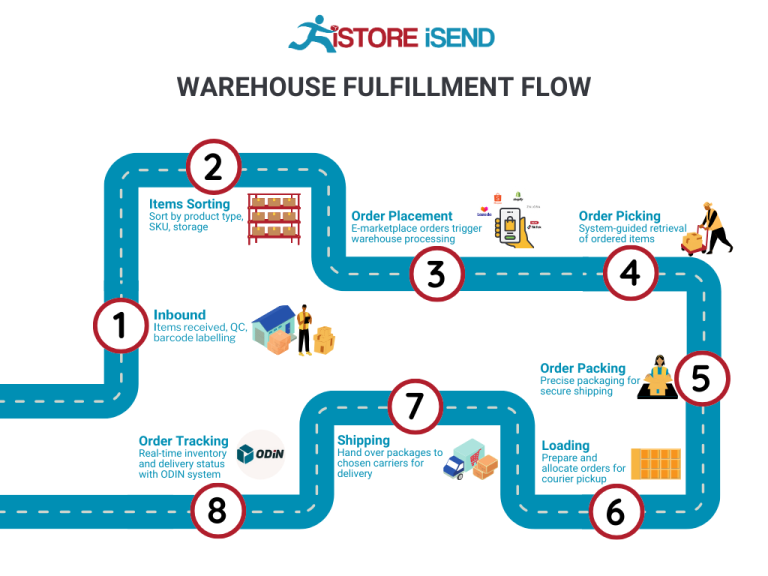
Pros of Using FBA
Prime Eligibility
One of the most significant advantages of FBA is that it allows sellers to offer their products to Amazon Prime members. This can significantly increase sales potential, as Prime members tend to prefer products that come with free and fast shipping options.
Customer Trust
Amazon is a well-established brand with a strong reputation for customer service. By using FBA, sellers benefit from this trust. Customers are more likely to purchase from an FBA seller due to Amazon’s robust return policy and customer service support.
Multi-Channel Fulfillment
FBA isn’t limited to sales on Amazon. Sellers can utilize FBA for orders from their own websites or other sales channels. This flexibility allows for streamlined inventory management across multiple platforms, further enhancing operational efficiency.
Scalability
FBA allows sellers to scale their business quickly without needing to invest heavily in warehouse space, staffing, or logistics. This is particularly beneficial for seasonal products or those experiencing rapid growth.
Comprehensive Analytics
Sellers using FBA have access to Amazon’s comprehensive analytics tools, which can provide insights into sales trends, customer behavior, and inventory management. This data can be invaluable for making informed business decisions.
Cons of Using FBA
High Fees
While FBA offers numerous benefits, it comes with costs. Sellers must pay for storage, fulfillment, and additional service fees, which can significantly cut into profit margins, particularly for low-cost items. It’s essential to calculate these costs carefully to ensure profitability.

Strict Inventory Rules
Amazon has stringent rules regarding inventory management, including requirements for labeling and packaging. Sellers must comply with these guidelines to avoid penalties or having their inventory returned or disposed of. This can be time-consuming and may require additional logistical planning.
Commingling Risks
FBA products are stored together, which means that inventory from different sellers can be commingled. This poses a risk if a product is returned or damaged, as sellers may face challenges in proving ownership of their specific inventory. This can be particularly concerning for branded items or products with unique identifiers.
Limited Control Over Fulfillment
When using FBA, sellers relinquish control over the fulfillment process. This means they cannot personally oversee packaging and shipping, which may lead to inconsistencies in presentation or customer experience.
Complexity in Returns
While Amazon manages returns for FBA sellers, the process can be complex. Returned items may not always be sent back to the original seller’s inventory, leading to potential losses and inventory discrepancies.
Who is FBA Best For?
Fulfillment by Amazon is best suited for:
-
Small to Medium-Sized Businesses: Companies that are looking to scale quickly without the burden of managing logistics can benefit immensely from FBA. It allows them to focus on marketing and sales rather than warehousing and shipping.
-
Sellers with Established Brands: Brands that have a loyal customer base can leverage FBA to enhance their reach and improve customer service without diminishing their brand integrity.
-
Seasonal Product Sellers: Businesses that experience seasonal demand fluctuations can use FBA to manage inventory effectively, storing products during peak seasons without worrying about long-term warehousing costs.
-
Multi-Channel Sellers: Those who sell across various platforms can streamline their operations by utilizing FBA for all sales channels, thereby simplifying fulfillment and inventory management.
-
New Entrepreneurs: Individuals starting their e-commerce journey can benefit from the ease of use and support provided by Amazon, allowing them to gain experience without the complexities of logistics management.
In conclusion, while Fulfillment by Amazon provides numerous benefits that can facilitate growth and streamline operations, it’s essential for sellers to weigh these against the costs and challenges involved. By understanding the dynamics of FBA, e-commerce entrepreneurs can make informed decisions that align with their business goals and operational capabilities.
Core Services Offered by Fulfillment Centers
Inventory Management & Warehousing
Inventory management and warehousing are foundational services provided by fulfillment centers. This process involves the systematic tracking of stock levels, orders, sales, and deliveries. Fulfillment centers utilize sophisticated inventory management systems to ensure that businesses can monitor their inventory in real-time, which is crucial for maintaining the balance between supply and demand.
Benefits to E-Commerce Businesses:
1. Optimized Stock Levels: By leveraging real-time data, businesses can avoid overstocking or stockouts, ensuring that customer demand is met without tying up excessive capital in unsold inventory.
2. Cost Efficiency: Fulfillment centers often operate on a larger scale, enabling economies of scale in storage and handling, which can translate to lower costs for e-commerce businesses.
3. Space Management: Outsourcing warehousing to a fulfillment center frees up valuable space for businesses, allowing them to focus on core activities like marketing and product development.
Pick and Pack Services
Pick and pack services are essential in the order fulfillment process, where individual items are selected from inventory (picked) and packaged for shipment (packed). This service is streamlined to ensure that orders are fulfilled accurately and efficiently, which is critical for customer satisfaction.
Benefits to E-Commerce Businesses:
1. Speed and Accuracy: Fulfillment centers employ trained staff and optimized processes to enhance the speed and accuracy of order fulfillment, reducing the likelihood of errors that can lead to customer dissatisfaction.
2. Scalability: As e-commerce businesses grow, their order volumes can fluctuate significantly. Fulfillment centers can easily scale their pick and pack services to accommodate spikes in demand, especially during peak seasons.
3. Custom Packaging Options: Many fulfillment centers offer various packaging options tailored to the product type, which can enhance the customer experience and improve brand perception.
Kitting and Assembly
Kitting and assembly services involve the grouping of individual items into ready-to-ship sets or kits. This can include anything from assembling complex products to bundling promotional items together. This service is particularly beneficial for businesses that sell products requiring assembly or that want to create bundled offers.
Benefits to E-Commerce Businesses:
1. Enhanced Product Offering: Kitting allows businesses to offer unique product combinations, which can differentiate them from competitors and attract more customers.
2. Streamlined Operations: By outsourcing kitting and assembly to a fulfillment center, businesses can streamline their operations and focus on their core competencies, such as marketing and sales.
3. Cost Savings: Fulfillment centers often have the necessary equipment and expertise to perform kitting and assembly more efficiently than in-house operations, leading to potential cost savings.
Returns Management (Reverse Logistics)
Returns management, or reverse logistics, refers to the process of handling returned products. This service is crucial for e-commerce businesses, where return rates can be significantly higher than in traditional retail. Fulfillment centers provide systems and processes to manage returns efficiently, ensuring that they are processed quickly and accurately.
Benefits to E-Commerce Businesses:
1. Improved Customer Satisfaction: A streamlined returns process can enhance customer satisfaction and loyalty, as customers appreciate hassle-free return experiences.
2. Inventory Replenishment: Efficient returns management ensures that returned items are quickly inspected and restocked, minimizing the impact on inventory levels and allowing for faster reselling of returned goods.
3. Data Insights: Analyzing return data can provide valuable insights into customer behavior and product performance, enabling businesses to make informed decisions regarding product offerings and marketing strategies.
In conclusion, leveraging the core services offered by fulfillment centers—inventory management and warehousing, pick and pack services, kitting and assembly, and returns management—can significantly enhance the operational efficiency and scalability of e-commerce businesses. By outsourcing these functions, business owners can focus on growth and customer engagement while ensuring that their logistics processes are optimized for success.
How to Choose a Fulfillment Partner: A 6-Point Checklist
Location & Warehouse Network
Importance: The geographical positioning of your fulfillment partner is crucial. A partner with warehouses strategically located near your customer base can significantly reduce shipping times and costs. This is particularly vital for e-commerce businesses where quick delivery can be a competitive advantage.
Questions to Ask:
– Where are your warehouses located, and how do they align with my target market?
– What is your shipping radius and expected delivery times to my customers?
– How do you handle inventory distribution across multiple locations?
Technology & Integrations
Importance: In today’s digital age, technology is the backbone of efficient fulfillment operations. A fulfillment partner should offer robust technology solutions that seamlessly integrate with your e-commerce platform, inventory management systems, and order processing tools. This ensures real-time visibility and tracking, reducing errors and enhancing customer satisfaction.
Questions to Ask:
– What technology platforms do you utilize for order management and inventory tracking?
– Can your systems integrate with my existing e-commerce and ERP solutions?
– Do you offer real-time analytics and reporting tools to track performance metrics?
Specializations (e.g., cold storage, oversized items)
Importance: Not all fulfillment centers are created equal. Depending on the nature of your products, you may require specialized services. If you deal with perishables, oversized items, or hazardous materials, ensure that your potential partner has the necessary capabilities and certifications to handle your specific needs.
Questions to Ask:
– Do you have specialized facilities for handling specific product types (e.g., cold storage, fragile items)?
– What certifications do you hold for handling specialized products?
– How do you ensure compliance with safety and regulatory standards for my product category?
Scalability & Capacity
Importance: As your business grows, your fulfillment needs will change. A suitable partner should be able to scale operations in response to your growth without compromising service quality. This includes having the capacity to handle peak seasons and unexpected surges in demand.
Questions to Ask:
– What is your current capacity, and how do you handle fluctuations in order volume?
– Can you provide examples of how you have scaled operations for other clients?
– What is your process for onboarding additional resources during peak periods?
Pricing and Contracts
Importance: Understanding the pricing structure and contract terms is critical to maintaining profitability. A transparent pricing model helps avoid hidden fees and ensures you can budget effectively. Additionally, flexible contract terms can provide peace of mind as you navigate changing business conditions.
Questions to Ask:
– Can you provide a detailed breakdown of your pricing structure?
– Are there any additional fees (e.g., storage, handling, shipping) that I should be aware of?
– What are the terms of the contract, and do you offer flexibility for changing business needs?
Customer Support & Reviews
Importance: Reliable customer support can make or break your relationship with a fulfillment partner. You need a partner who is responsive and proactive in addressing issues as they arise. Additionally, reviewing customer feedback can provide insight into their reputation and reliability in the industry.
Questions to Ask:
– What support channels do you offer (e.g., phone, email, chat), and what are your response times?
– Can you provide references or testimonials from current clients?
– How do you handle issues or complaints, and what is your escalation process?
Conclusion
Choosing the right fulfillment partner is a pivotal decision that can influence your e-commerce business’s success. By thoroughly evaluating potential partners against this checklist, you can ensure that you select a fulfillment center that not only meets your current needs but can also grow with your business. Prioritize partners who demonstrate expertise, flexibility, and a commitment to customer satisfaction, as these qualities will ultimately contribute to your operational efficiency and customer loyalty.
Understanding Fulfillment Pricing: A Breakdown of Common Fees
Initial Setup Fees
Initial setup fees are the costs associated with getting your products integrated into a fulfillment center’s system. This can include the creation of your account, onboarding processes, and the configuration of technology platforms for inventory management and order processing. These fees can vary widely based on the complexity of your inventory and the specific services offered by the fulfillment center.
Typically, these fees are calculated as a one-time charge, which may range from a few hundred to several thousand dollars, depending on the provider. Some fulfillment centers might waive these fees for larger clients or long-term contracts, so it’s beneficial to negotiate upfront.
Receiving Fees
Receiving fees are charged when the fulfillment center takes possession of your inventory. This includes the costs of unloading, inspecting, and entering the products into the inventory management system. Receiving fees can vary based on the volume and type of products being received.
This fee is generally calculated per shipment or per unit, and may also include additional charges for special handling of oversized or fragile items. It’s crucial to understand how these fees are structured, as they can significantly impact your overall fulfillment costs, especially if you have frequent shipments.
Storage Fees (per pallet/bin)
Storage fees apply to the space your inventory occupies within the fulfillment center. This is typically charged on a per pallet or per bin basis and can be calculated monthly or quarterly. The cost will vary based on the size of the pallet or bin and the location of the fulfillment center.
For instance, urban centers may charge higher storage fees due to increased real estate costs, while rural locations might offer more competitive rates. Understanding your inventory turnover rate is vital here; slow-moving items will incur higher storage fees over time, so consider strategies to optimize inventory levels and reduce costs.
Pick & Pack Fees (per item/order)
Pick and pack fees are incurred each time an order is fulfilled. This fee covers the labor involved in selecting items from inventory and packing them for shipment. The fee can be structured in several ways: per item, per order, or a combination of both.
For example, some fulfillment centers may charge a flat fee for picking a certain number of items and then an additional fee for each item beyond that limit. It’s essential to clarify how these fees are calculated, as they can vary based on the complexity of the packing process (such as the use of special packing materials or multi-item orders). Efficient order management can help reduce these costs.
Shipping Fees
Shipping fees are the costs associated with transporting your products from the fulfillment center to your customers. These fees can vary widely based on several factors, including the shipping method (ground, air, expedited), package dimensions, weight, and destination.
Fulfillment centers often have negotiated rates with carriers, which can provide cost savings compared to standard retail shipping rates. However, it’s essential to understand how these fees are calculated and whether they include additional charges for handling or fuel surcharges. Some fulfillment providers may offer flat-rate shipping options, which can simplify budgeting.
Tips for Getting an Accurate Quote
-
Be Transparent: Provide detailed information about your products, expected order volume, and any specific handling requirements. The more information you offer, the more accurate the quote will be.
-
Request Itemized Pricing: Ask for a breakdown of all potential fees, including initial setup, receiving, storage, pick & pack, and shipping. This will help you understand the full scope of costs involved.
-
Negotiate Terms: Don’t hesitate to negotiate fees, especially if you are committing to a long-term contract or higher volume. Many fulfillment centers are willing to adjust pricing based on your business needs.
-
Consider Seasonal Variations: If your business has seasonal fluctuations in order volume, discuss how this will impact pricing. Some fulfillment centers may offer flexible pricing structures to accommodate these changes.
-
Analyze Additional Services: If you require additional services such as kitting, labeling, or special handling, ensure these are included in your quote. Understanding these costs upfront can prevent surprises later.
By carefully analyzing each component of fulfillment pricing and negotiating effectively, you can optimize your logistics costs and improve your e-commerce profitability.
Frequently Asked Questions (FAQs) about Fulfillment
1. What is a Fastenal Fulfillment Center, and why is it appointment-only?
A Fastenal Fulfillment Center is a dedicated facility where products are stored, processed, and shipped to customers. The appointment-only policy is implemented to manage inventory effectively, optimize labor resources, and ensure that each customer receives personalized service during their visit, minimizing wait times and enhancing operational efficiency.
2. How do I schedule an appointment at a Fastenal Fulfillment Center?
To schedule an appointment, you can contact your local Fastenal Fulfillment Center directly via phone. It’s advisable to provide details about your intended visit, such as the date and time, as well as the purpose of your appointment to facilitate a smoother process.
3. What products can I find at a Fastenal Fulfillment Center?
Fastenal Fulfillment Centers offer a wide range of industrial supplies, including fasteners, safety products, tools, hardware, and more. Their extensive inventory caters to various sectors, including manufacturing, construction, and maintenance.
4. What’s the difference between a warehouse and a fulfillment center?
A warehouse primarily focuses on storage, while a fulfillment center is designed to efficiently process orders for shipment. Fulfillment centers typically have advanced logistics systems to handle picking, packing, and shipping, enabling faster delivery times and better inventory management.
5. What is a 3PL (Third-Party Logistics) provider?
A 3PL is a company that provides outsourced logistics services, including transportation, warehousing, and fulfillment. Businesses often partner with 3PL providers to leverage their expertise and resources, allowing them to scale operations without investing heavily in their logistics infrastructure.
6. How much do fulfillment services cost?
Fulfillment service costs vary based on several factors, including order volume, storage space required, and specific services needed (like packing and shipping). It’s important to request a detailed quote from your fulfillment partner to understand the pricing structure and potential additional fees.
7. What are the operating hours of Fastenal Fulfillment Centers?
Operating hours may vary by location, but typically, Fastenal Fulfillment Centers are open during standard business hours on weekdays. It is crucial to confirm the hours when scheduling your appointment, as they can differ from branch to branch.
8. Can I pick up my order at a Fastenal Fulfillment Center?
Yes, you can pick up your order at a Fastenal Fulfillment Center. However, it’s important to place your order in advance and schedule an appointment for pickup to ensure that your items are ready and available upon your arrival.
9. What steps should I take if I need to change or cancel my appointment?
If you need to change or cancel your appointment, contact the Fastenal Fulfillment Center as soon as possible. Providing advance notice allows the team to adjust their schedules and resources accordingly, enhancing service for all customers.
10. How does Fastenal ensure the accuracy of orders?
Fastenal employs systematic processes and technology to ensure order accuracy. This includes barcoding systems, inventory management software, and thorough checks during the picking and packing process. These measures help reduce errors and improve customer satisfaction.
Conclusion: Is Outsourcing Fulfillment the Right Move for Your Business?
Key Benefits of Outsourcing Fulfillment
Outsourcing fulfillment can be a transformative strategy for e-commerce businesses looking to scale. First and foremost, it saves valuable time. By entrusting your logistics to a specialized partner, you can redirect your focus towards core business activities such as product development, marketing, and customer engagement. This shift not only boosts productivity but also enhances your ability to innovate and grow.
Scalability is another critical advantage. As your sales increase, so do the complexities of managing inventory, shipping, and returns. A fulfillment partner like Fastenal provides the infrastructure and resources to handle fluctuating demand seamlessly. This means you can scale up operations during peak seasons without the burden of investing in additional warehouse space or staff, allowing for a more agile response to market changes.
Expertise is also a significant factor. Fulfillment centers often have established processes, cutting-edge technology, and industry knowledge that can enhance your shipping efficiency and accuracy. This expertise can lead to improved delivery times and customer satisfaction, which are vital for retaining and expanding your customer base.
Choosing the Right Partner
However, the benefits of outsourcing fulfillment hinge on selecting the right partner. It’s essential to evaluate potential partners not only on their service offerings but also on their ability to align with your business goals. Look for a fulfillment center that understands your product needs and can provide flexibility as your business evolves.
Call to Action
To determine if outsourcing fulfillment is the right next step for your business, conduct a thorough audit of your current shipping process. Assess your costs, delivery times, and customer feedback. This analysis will help you identify areas for improvement and clarify whether a fulfillment partner could enhance your operational efficiency and support your growth ambitions. Take the first step towards smarter logistics and consider how outsourcing could unlock new opportunities for your e-commerce business.
Important Disclaimer
⚠️ Important Disclaimer
The information in this guide is for educational purposes. Fulfillment services, pricing, and platform features change frequently. Always conduct your own due diligence and consult with providers directly before making business decisions.
